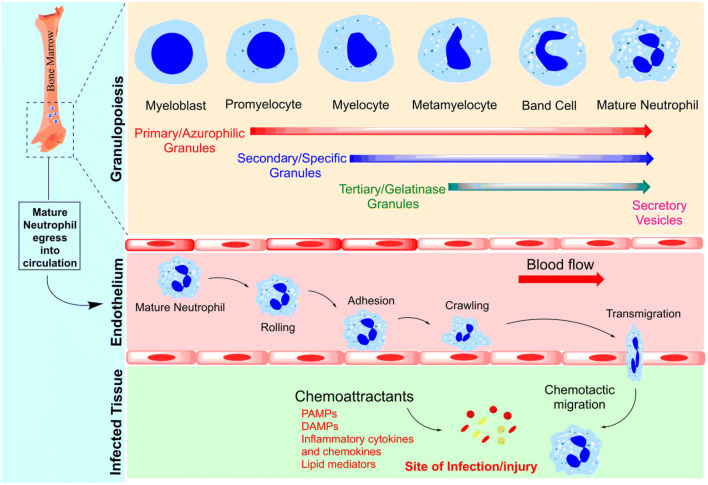Fig. 1.
Neutrophil granulopoiesis and recruitment to the target site. Granulopoiesis is characterized by the sequential formation of neutrophil granules. Myeloblast is the first cell of committed granulopoiesis that further differentiates into promyelocyte, myelocyte, metamyelocyte, band cell, and finally into mature neutrophil. Azurophilic or primary granules are synthesized at the promyelocytic stage. Specific or secondary granules are synthesized during the myelocyte stage and then gelatinase or tertiary granules are formed during the metamyelocyte stage. Finally, secretory vesicles (SVs), which are exocytoseable membrane-bound organelles, are formed at the late stage of neutrophil maturation. Mature neutrophils now egress from the bone marrow into circulation. Upon sensing any chemoattractant, mature neutrophils actively migrate from circulation to the site of infection or injury in a process called extravasation that is a multi-step process including rolling, adhesion, crawling, and transmigration

